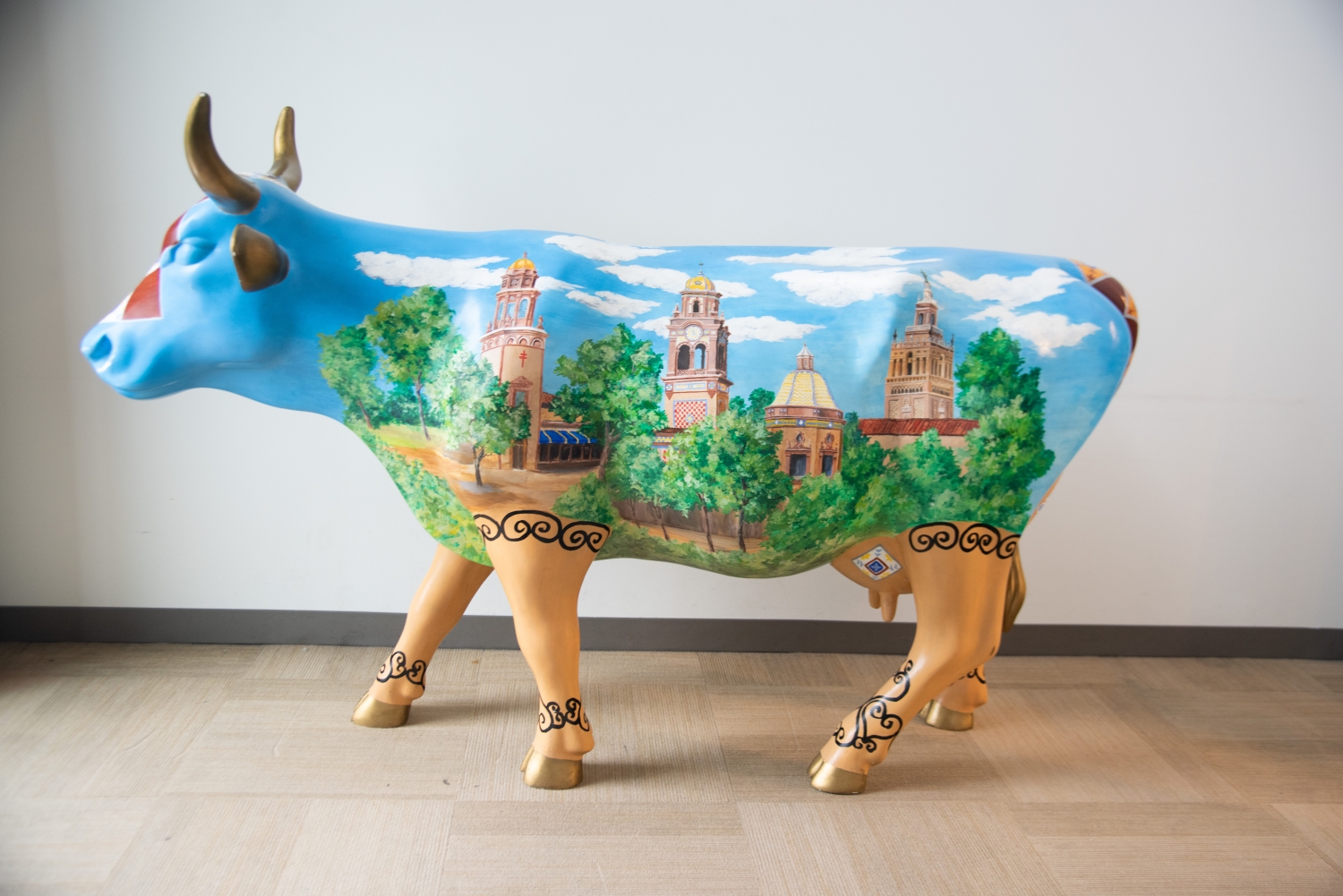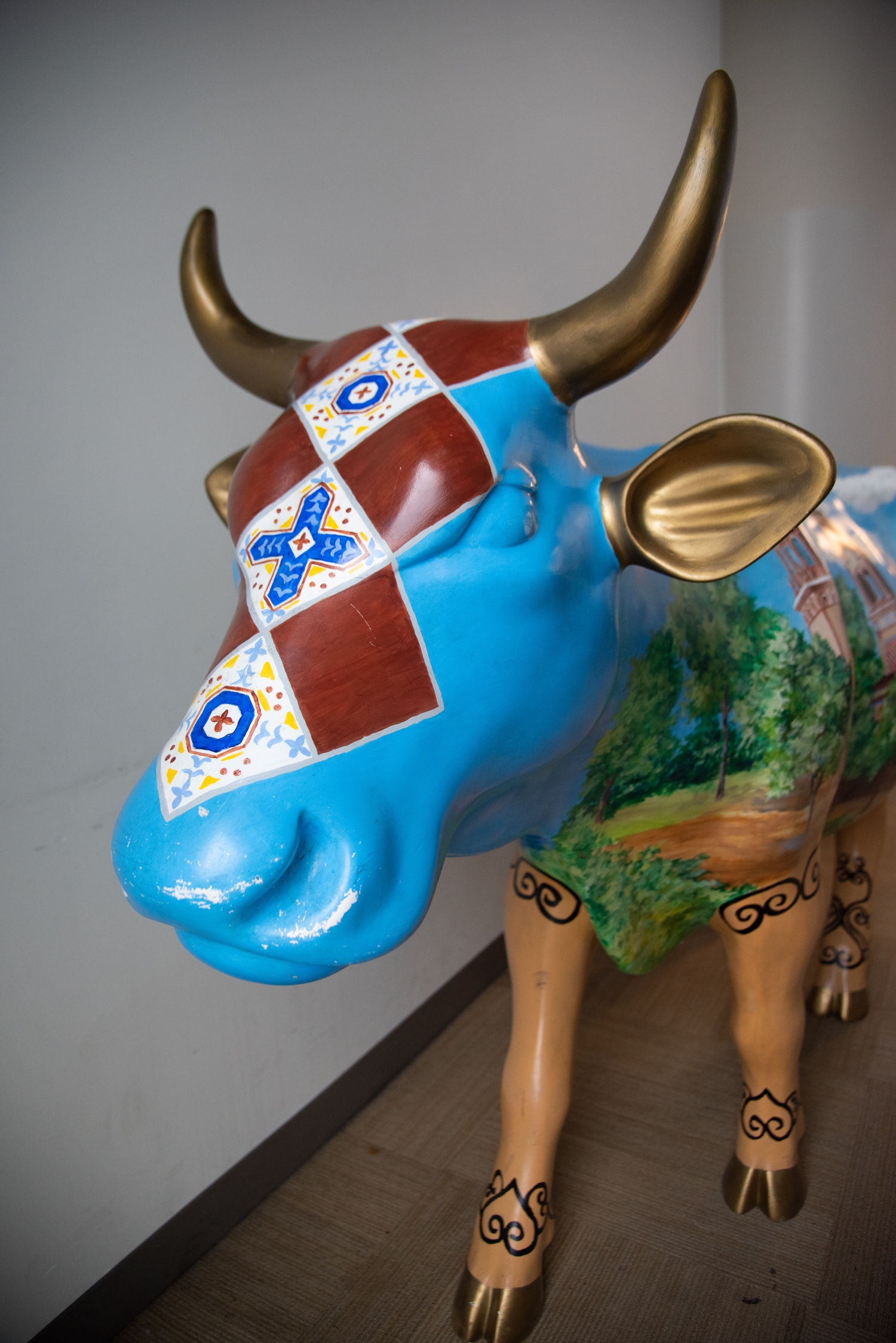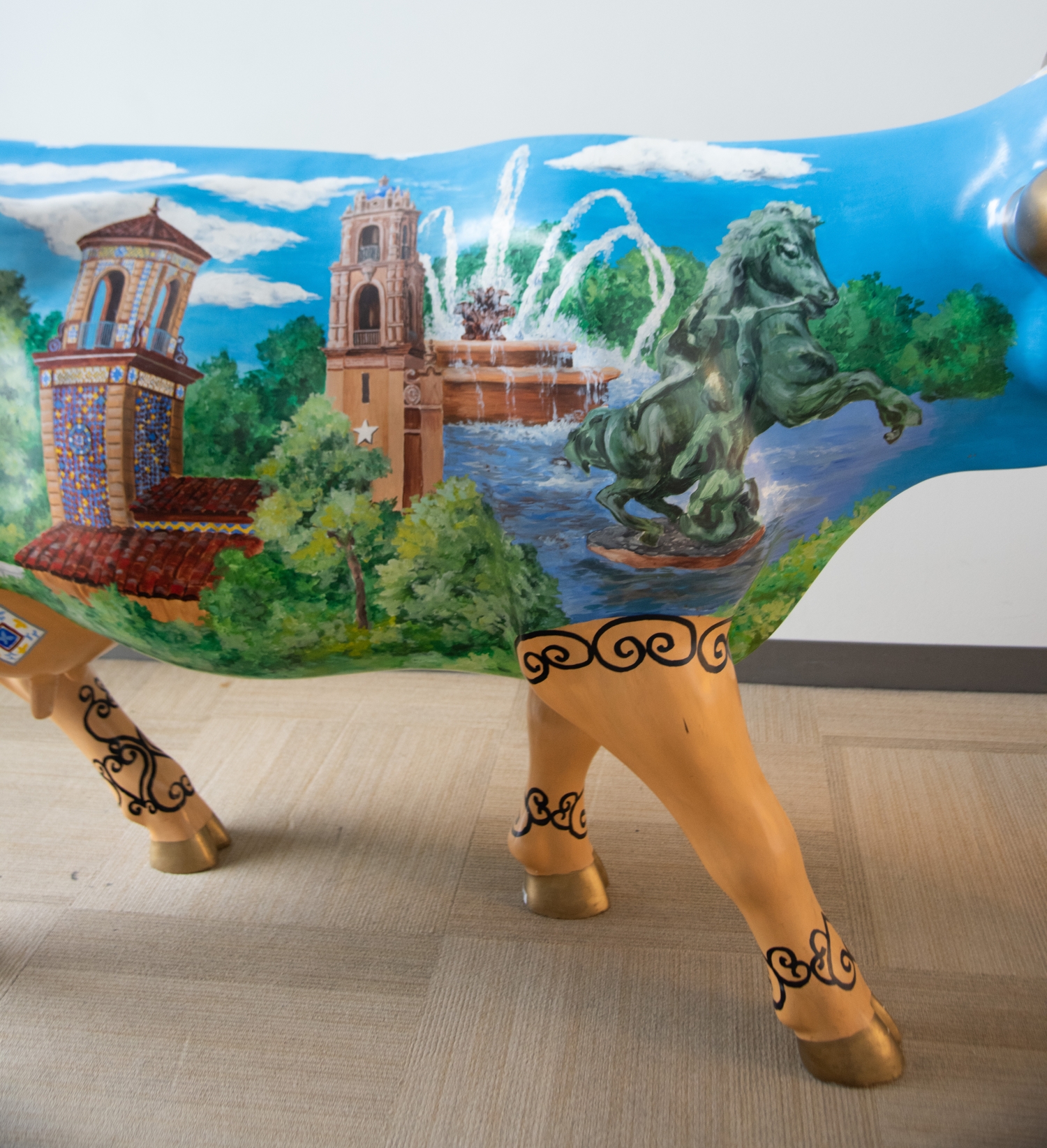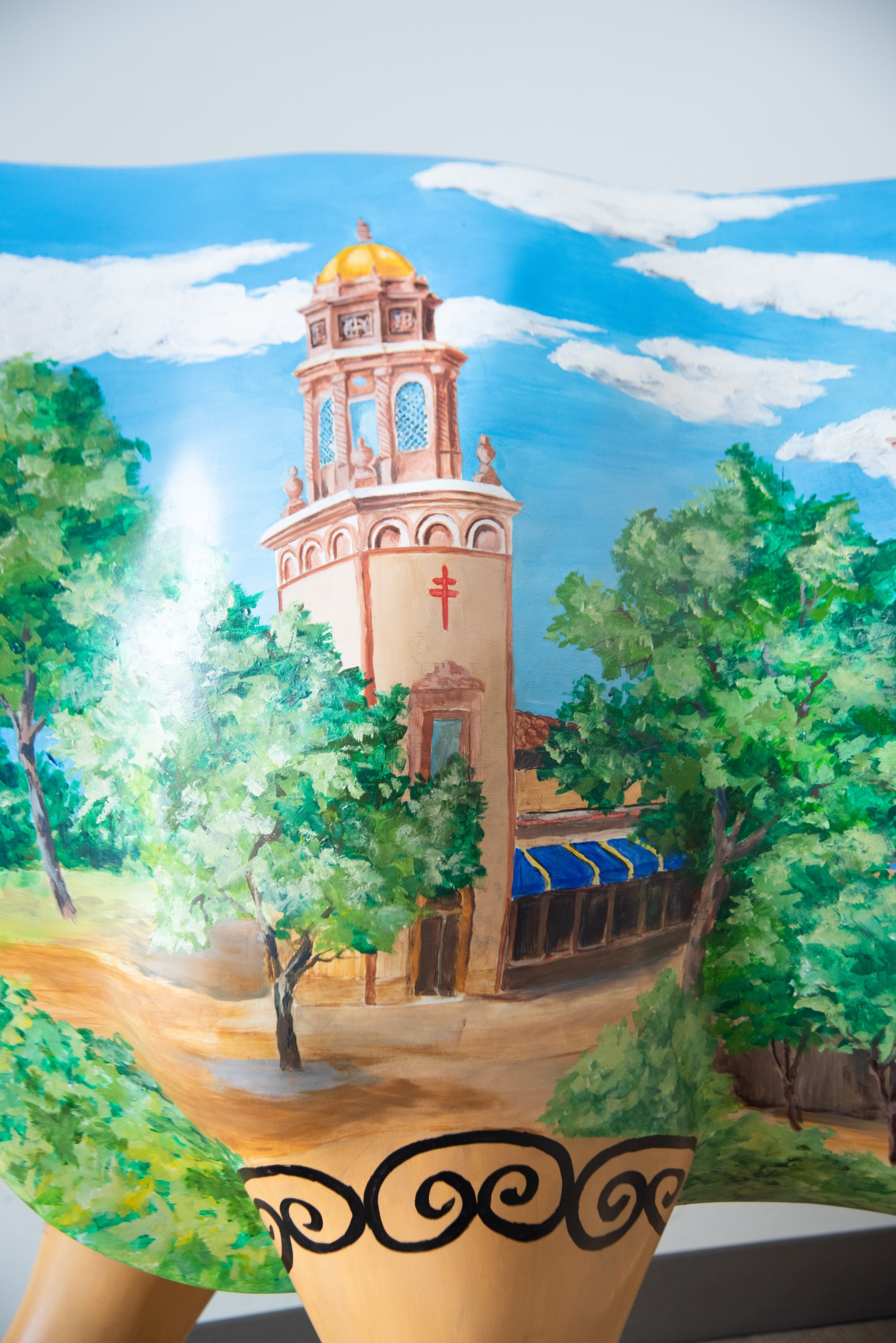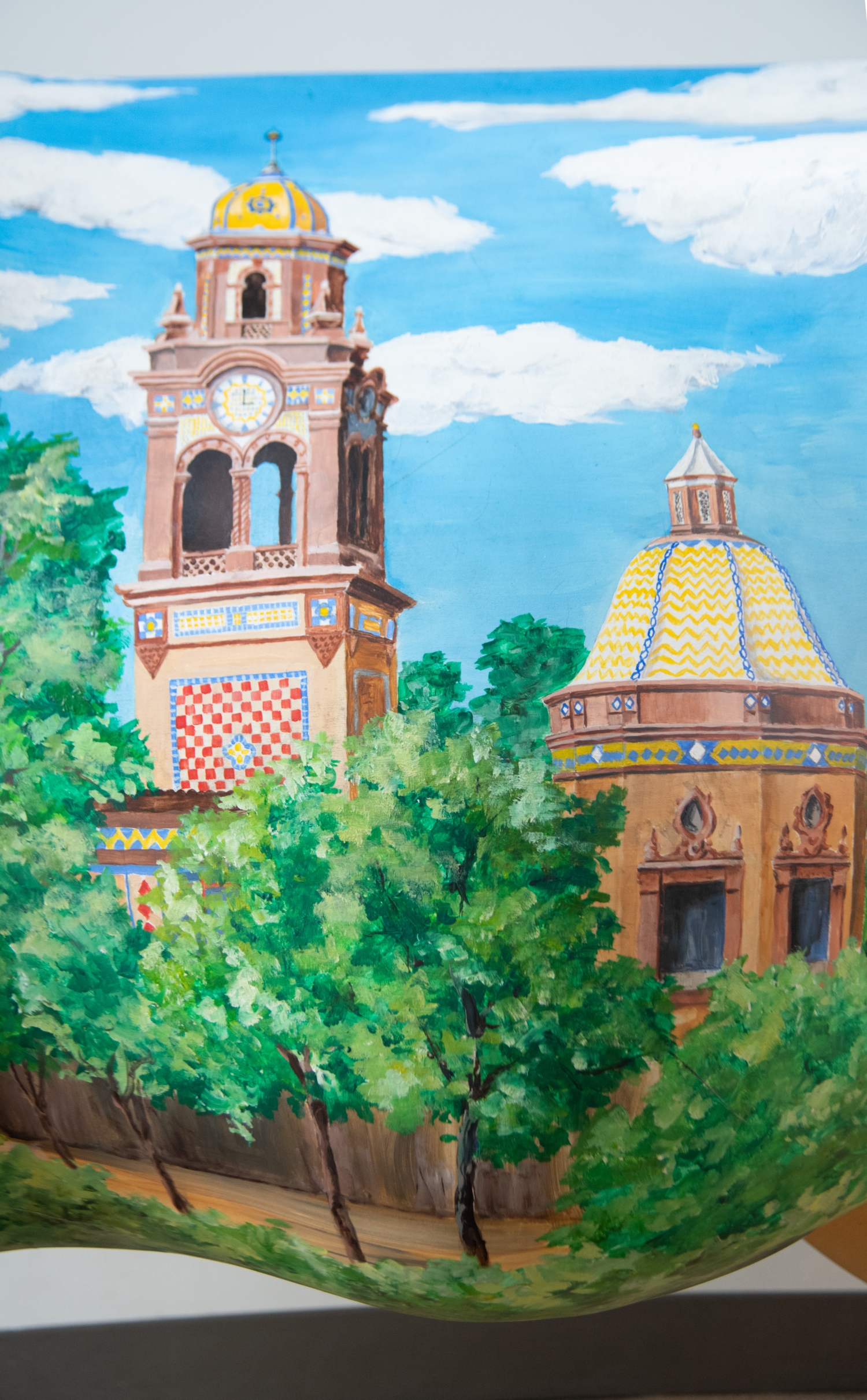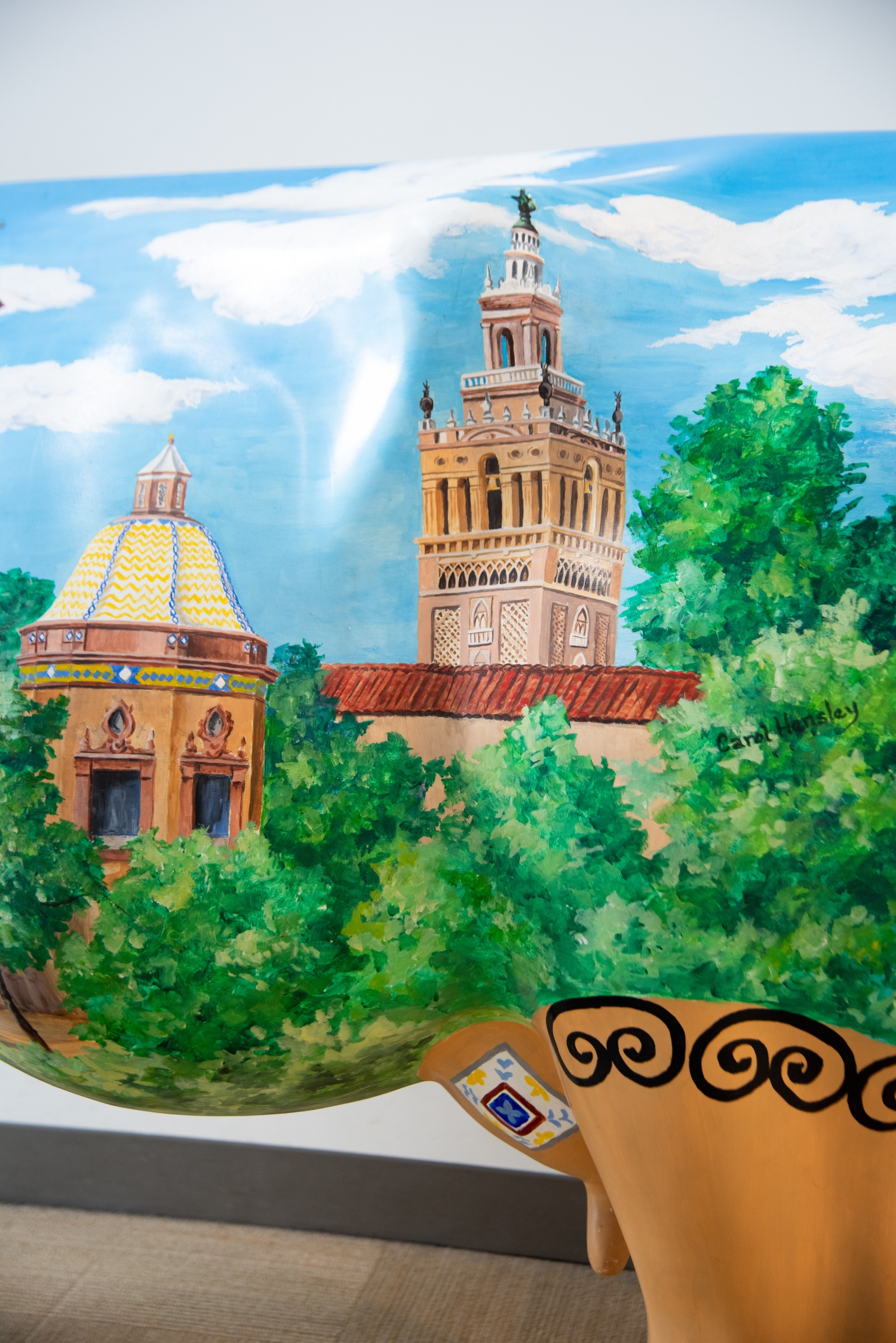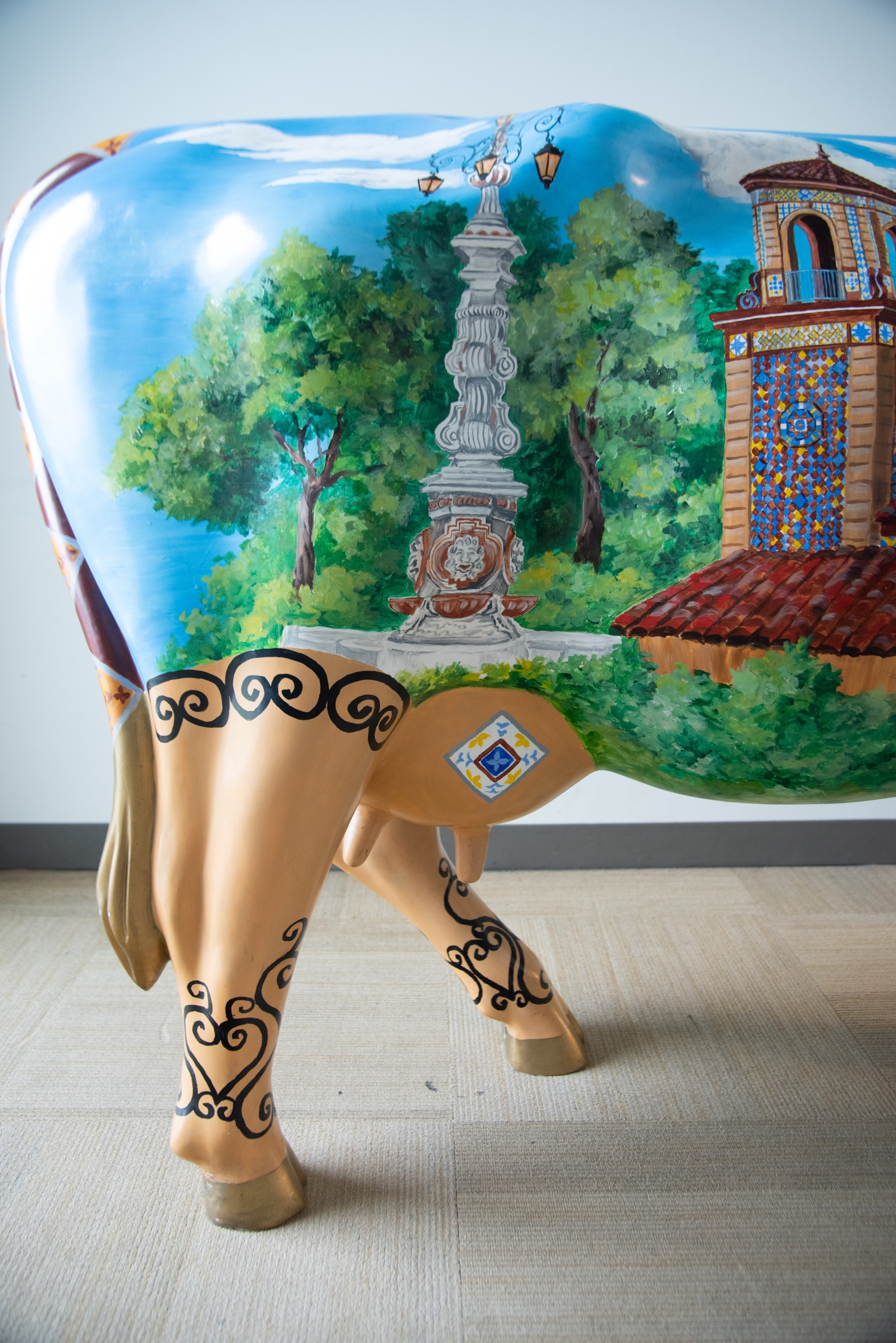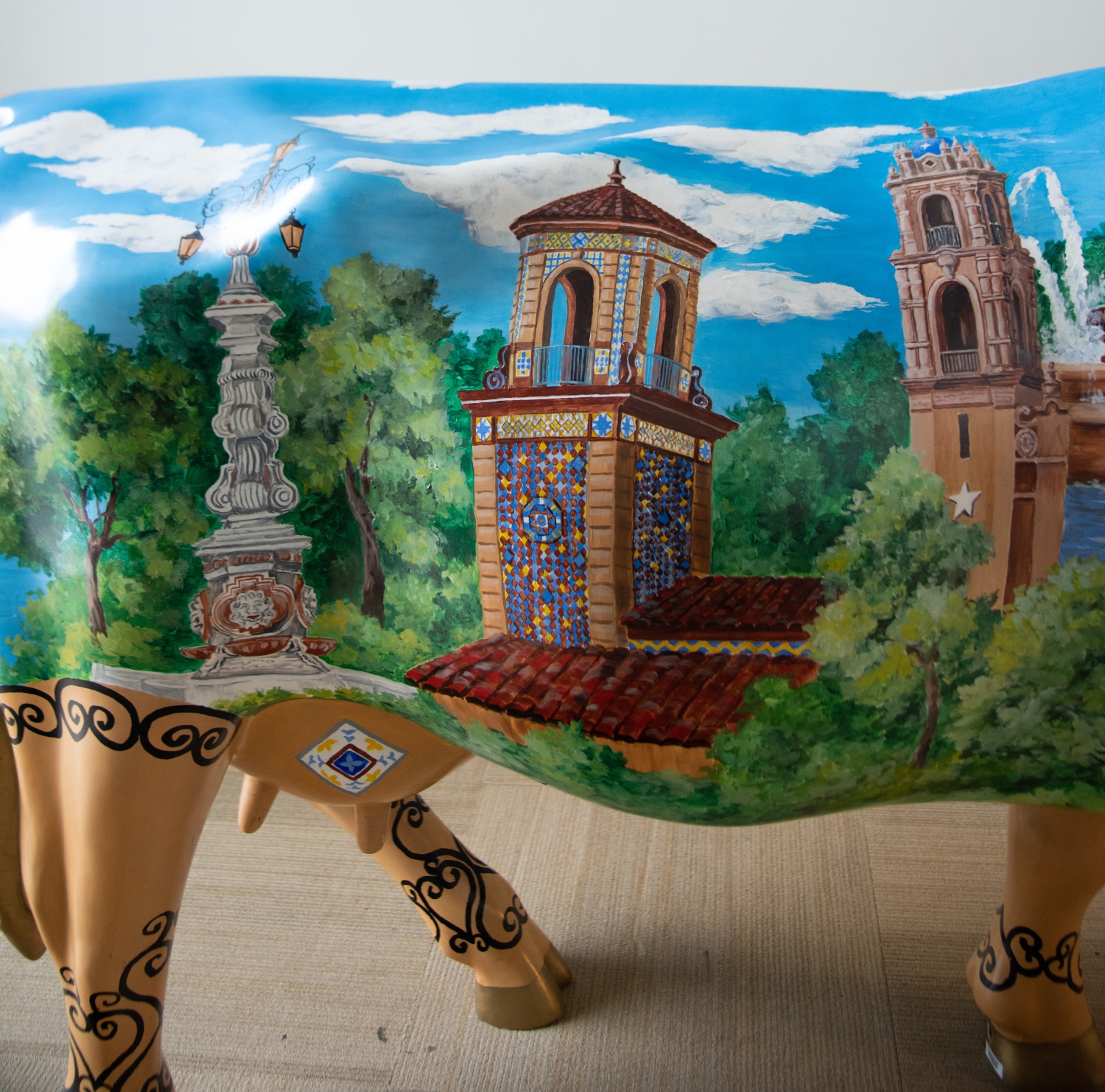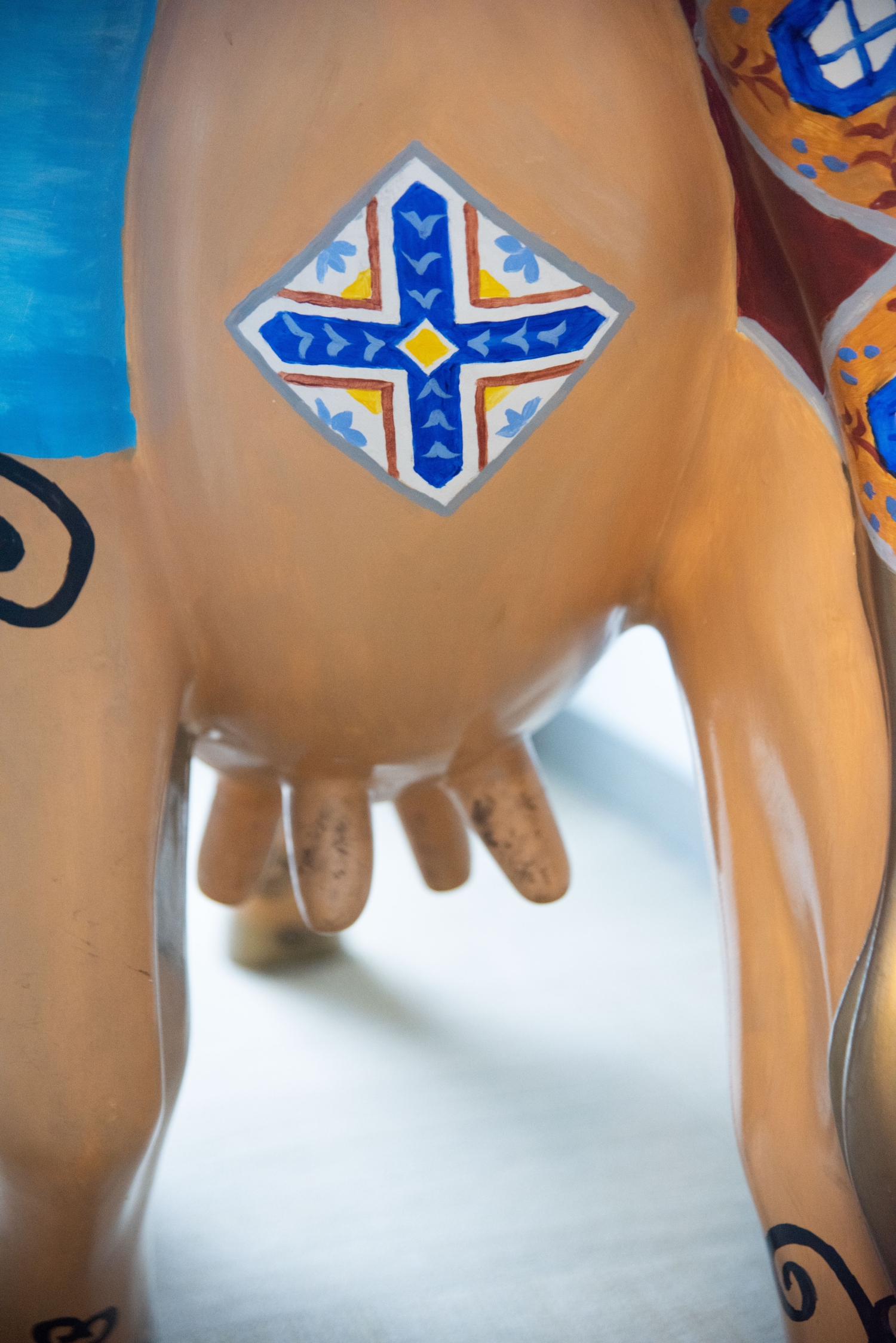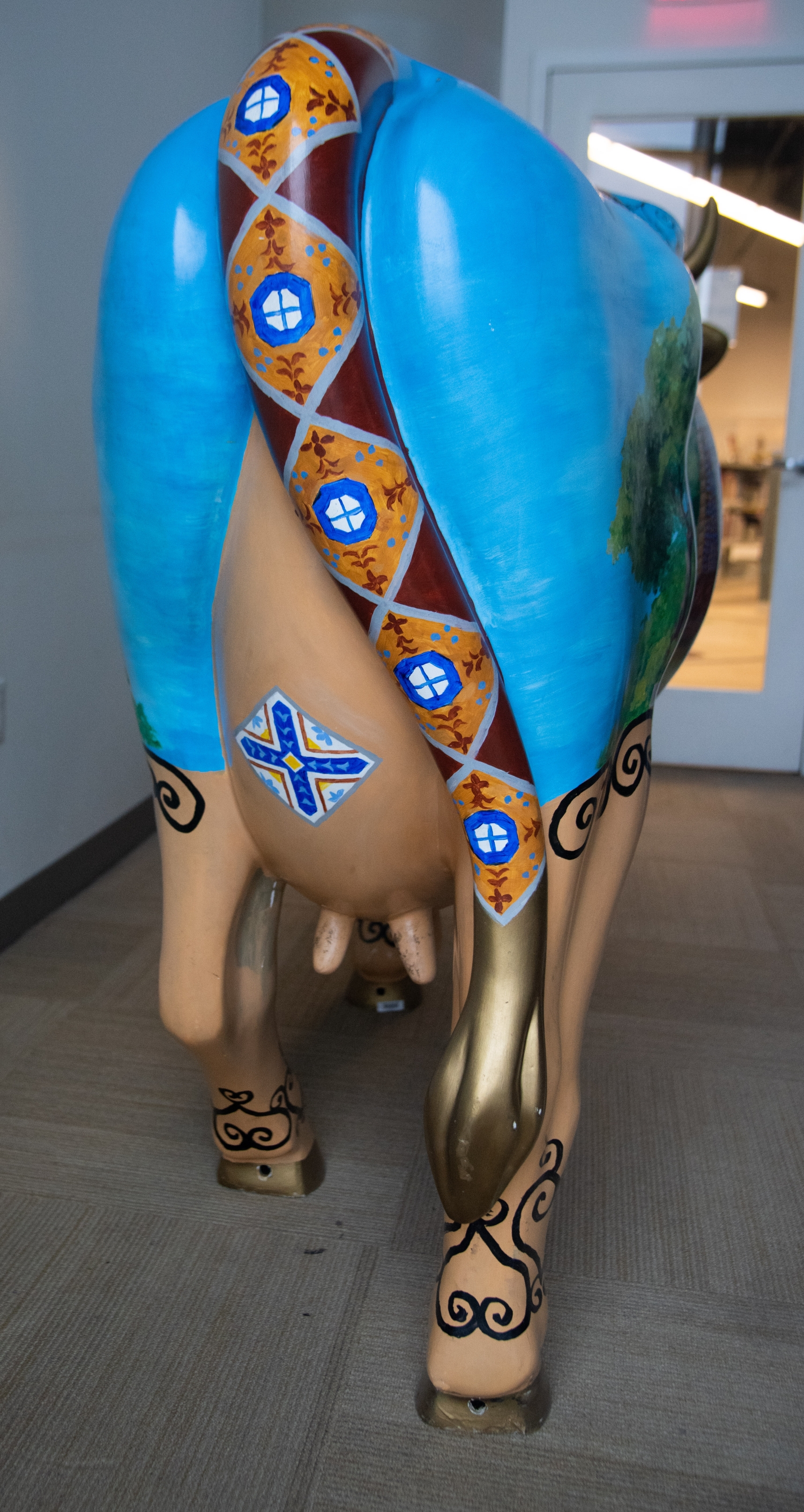Cowtown Plaza
CowParade is an ongoing international public art exhibit that has featured the artistry of over 5,000 artists across 80 major world cities. Fiberglass sculptures of cows are decorated by local artists, and distributed around the host city in public places such as train stations, important avenues, and parks. They often feature artwork and designs specific to local culture, as well as city life and other relevant themes. There are three styles of cows provided –standing, grazing, or reclining. Artists are selected to decorate the cows based on design ideas submitted to a committee. The only rule is to avoid religious, salacious or political themes. Each artist is provided with an honorarium and permitted to paint, sculpt, transform and embellish the cow as they wish. The first CowParade took place in 1999 in Chicago, Illinois and the latest participant was CowParade Salvador, 2019.
The cow was chosen as an art canvas because it is a universally beloved animal and represents different things to different people around the world. To some, the cow is sacred, to some it is historical, but everyone is connected to each other and our memories through a common feeling of affection. The cow also allows for form, flexibility, and contiguous breadth on which artists can produce art. The three poses provide artists with subtle, yet interesting angles and curves on which to create unique works of art. The basic cow form is also benign so that it can be altered, transformed, and morphed into completely other animals, people or objects.
In 2001, the Kansas City metro area served as a giant urban pasture to more than 300 free-range bedecked bovines. After hosting a 15-week public display across the metro area, proceeds from sales of CowParade Kansas City cows promoted the arts and benefited children's art and education programs of The Kemper Museum of Contemporary Art, The American Royal, and The Friends of the Zoo to name a few.
Artist Carol Hensley painted both sides of CowTown Plaza in a bucolic muralist style with images of iconic architecture found across the Kansas City Country Club Plaza. Placid cumulus clouds punctuate a bright blue sky and an abundance of lush green trees line the promenades. The cow’s horns, ears, hooves, and tip of the tail were all painted antique gold. She embellished the head, tail, and udder with vibrant depictions of terracotta, blue, yellow, and white Spanish tiles incorporated into many architectural details seen around the Plaza. The cow’s legs were painted to represent traditional exterior Spanish stucco walls, which Hensley chose to contrast with black swirls reminiscent of graceful wrought iron balconies. These design elements all serve to remind viewers that Kansas City is a sister city of Seville, Spain.
